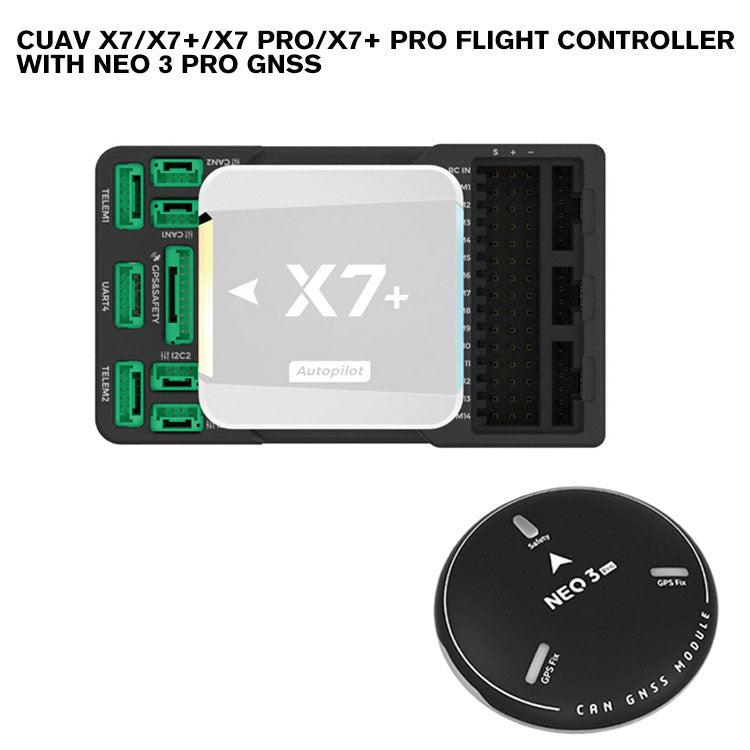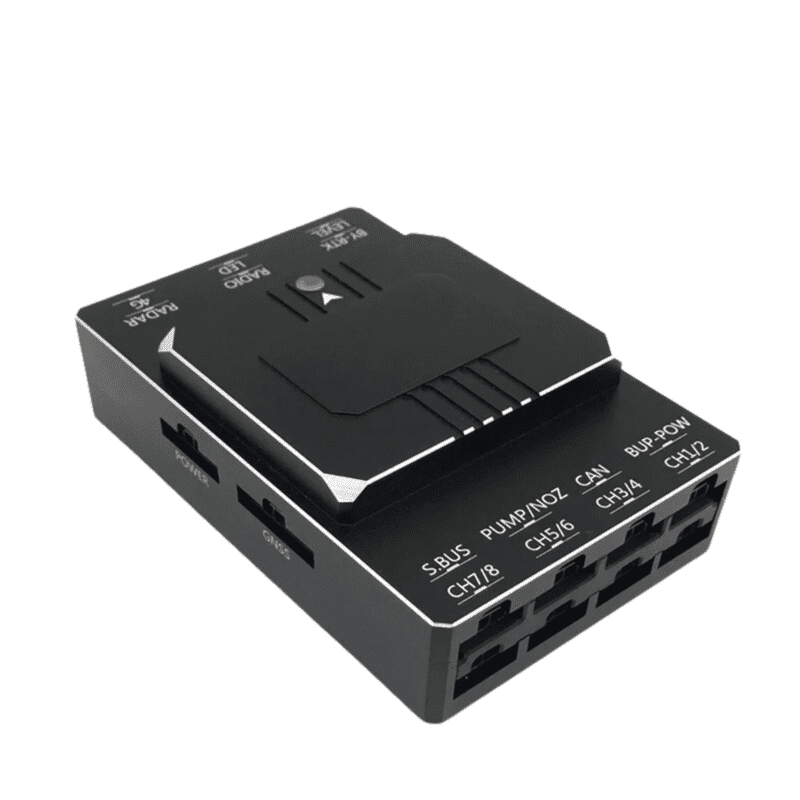The Future of UAVs: SparkNavi Drone Flight Controller and GNSS/INS Made in Taiwan
The Future of UAVs: SparkNavi Drone Flight Controller and GNSS/INS Made in Taiwan
Blog Article
The Value of Drone Flight Controllers in Modern Aerial Technology: Secret Components and Their Influence
In the realm of modern-day aerial innovation, drone trip controllers work as the critical systems that coordinate a drone's performance and capacities. These advanced devices integrate crucial components such as microcontrollers and GPS components, facilitating security and precision in trip procedures. Their function is specifically obvious in autonomous features, where advanced formulas boost navigating and barrier avoidance. As sectors significantly depend on drones for applications varying from farming to surveillance, the evolving technology within flight controllers increases critical questions regarding their future impact and possible developments. What developments lie in advance that could redefine our understanding of drone capacities?

Review of Drone Flight Controllers
In the world of airborne technology, drone trip controllers act as the important mind of unmanned airborne lorries (UAVs), making it possible for specific ability to move and security during trip. These sophisticated systems incorporate sensor data, refining formulas, and control inputs, enabling drones to carry out intricate trip patterns with precision.
Drone flight controllers use different sensing units, such as gyroscopes, accelerometers, and GPS modules, to analyze the UAV's positioning and setting in real-time. This details is essential for keeping balance and making sure safe operation in varied environmental conditions. The controllers process this information to make instantaneous adjustments to the drone's motors, permitting for smooth transitions and responsive handling.
Moreover, flight controllers are outfitted with innovative software that supports attributes such as waypoint navigating, barrier avoidance, and autonomous flight capabilities. This software application is critical for both entertainment and commercial applications, where integrity and accuracy are vital. As drone innovation proceeds to development, the development of flight controllers will certainly play a pivotal duty in boosting UAV security, capability, and flexibility, ultimately increasing their applications across numerous sectors.
Secret Elements Explained
Comprehending the fundamental parts of drone trip controllers is crucial for comprehending just how these systems run efficiently. At the heart of a trip controller is the microcontroller, which functions as the brain, refining data from various sensing units and executing commands. Important sensors consist of gyroscopes and accelerometers, which measure the drone's orientation and motion, offering critical feedback for stablizing.
An additional secret component is the measure, which gauges elevation by gauging atmospheric pressure, while general practitioner modules offer positional data, making it possible for independent navigation - SparkNavi drone flight controller and GNSS/INS made in taiwan. The flight controller also interfaces with Electronic Rate Controllers (ESCs), which regulate the speed of the drone's electric motors based on the controller's commands
Interaction components, such as radio receivers, facilitate remote control input, enabling operators to send out commands in real-time. In addition, some trip controllers incorporate software application that can manage complicated formulas for waypoint navigation, flight planning, and telemetry data analysis.
Function in Trip Security
Central to maintaining flight security, drone trip controllers utilize advanced formulas to process sensing unit information and make real-time modifications. These controllers are furnished with a variety of sensing units, including gyroscopes, accelerometers, and measures, which constantly check the drone's rate, altitude, and positioning. By interpreting this data, the trip controller can recognize variances from the desired trip course and respond without delay to preserve stability.
For example, if a drone experiences an unanticipated gust of wind, the trip controller can quickly change the electric motor speeds to neutralize the disturbance, guaranteeing a consistent flight trajectory. This capacity is critical not just for hands-on flight operations however likewise for performing complicated maneuvers and maintaining smooth flight in various ecological problems.
.jpg)
Moreover, the sophisticated formulas used in flight controllers, such as PID (Proportional-Integral-Derivative) control, allow for fine-tuning of the drone's response to changes in trip conditions. By optimizing these control specifications, flight controllers can enhance stability, enhance responsiveness, and minimize pilot workload. Ultimately, the role of flight controllers in making sure trip security is important for the effective and safe procedure of modern-day drones across diverse applications.
Influence On Autonomous Workflow

Self-governing operations are especially important in varied applications such click for more as security, farming, and distribution services. With improved trip controllers, drones can autonomously navigate fixed routes, efficiently collect data, and adapt to vibrant settings. This capability decreases the requirement for consistent human oversight, thus increasing operational performance and safety.
Additionally, the application of artificial intelligence methods within flight controllers makes it possible for drones to enhance their performance gradually by gaining from previous objectives. This versatility leads the way for a lot more innovative self-governing applications, such as throng technology, where several drones collaborate their activities to accomplish an usual purpose.
Future Trends in Trip Controllers
Innovations in trip controller modern technology are poised to change drone capacities in the coming years. One substantial trend is YOURURL.com the assimilation of synthetic knowledge (AI) and artificial intelligence formulas, enabling drones to pick up from their atmospheres and make real-time decisions. This development will certainly enhance autonomous navigating, challenge avoidance, and objective planning, substantially enhancing operational efficiency and security.
Furthermore, the development of advanced sensing unit modern technologies, such as LiDAR and multispectral imaging, will supply flight controllers with richer data inputs. This will assist in more advanced logical capabilities, allowing drones to perform complicated jobs, such as precision rescue, search and farming, and framework evaluations with unprecedented precision.
Another emerging fad is the miniaturization of flight controller elements, which will lead to lighter and much more small drones. This evolution will extend flight periods and payload abilities, making drones extra versatile for different applications.
Verdict
To conclude, drone trip controllers work as important elements in contemporary airborne technology, ensuring security and precision in ability to move via the integration of microcontrollers, accelerometers, and GPS modules. SparkNavi drone flight controller and GNSS/INS made in taiwan. Their ability to allow self-governing operations and adapt to different applications highlights their significance throughout numerous sectors. As improvements in artificial knowledge and sensor innovation proceed to arise, the capacity for enhanced capabilities and enhanced functional performance in drone systems will likely reshape the future of airborne applications
Central to keeping site link trip security, drone trip controllers utilize advanced formulas to refine sensing unit information and make real-time adjustments. By interpreting this information, the trip controller can determine variances from the desired flight path and respond immediately to keep stability.
Furthermore, the innovative algorithms utilized in trip controllers, such as PID (Proportional-Integral-Derivative) control, allow for fine-tuning of the drone's feedback to changes in flight problems. Eventually, the duty of trip controllers in making sure flight stability is important for the reliable and risk-free procedure of modern-day drones across varied applications.
The improvements in drone trip controllers not only boost flight security but additionally dramatically influence autonomous procedures. SparkNavi drone flight controller and GNSS/INS made in taiwan.
Report this page